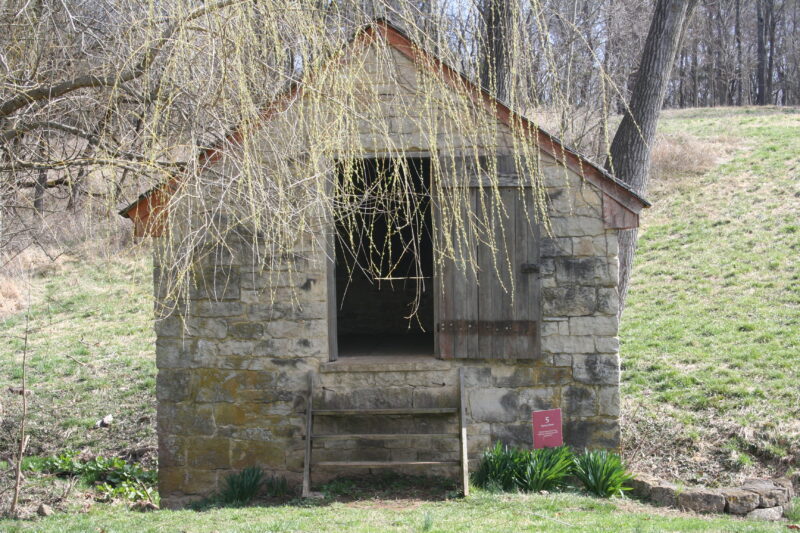Spring House
This stone structure over the small creek is the springhouse here at Locust Grove. Springhouses were typically two-story buildings made of stone with a frame roof built into the side of a hill. An early form of refrigeration, the springhouse used cold water from the stream to help preserve milk, cheese, and other perishable items. These items were stored in crocks and placed into the running water. The upper level offered a space for cool, dry storage. The springhouse is also equipped with a dipping pool where water that flowed down from the hillside could enter the springhouse on the ground level. The springhouse also provided another source of water for cooking and bathing in addition to the well next to the house. Clean water was of especial importance on the frontier of Kentucky, as waterborne diseases such as cholera were common causes of death in cities connected by river traffic. Eliza Croghan Hancock, Lucy and William’s fifth child, died of cholera during the Louisville cholera epidemic in 1833. Cholera was alleviated by instituting standardized sanitation practices throughout the state.

